Tančica or arnautka
It is a rifle named after an unusually long and thin barrel (hrv. tančica - something long and thin). It is almost entirely covered in ornamented brass shackles. It has different names based on form of gunstock: "čibuklija", "karanfilka", "raška" or "roga". It fires by a flintlock mechanism.
Firelock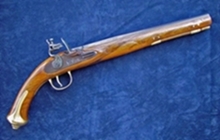
Several types are differed based on form. They all share that they have a curved handle with an ovoid ending and lined with a silver or brass flower motif. Firelocks were good for short distance battles. Range and precision were not so great. Their biggest advantage was possibility of shooting in motion.
Schiavona i schiavonesca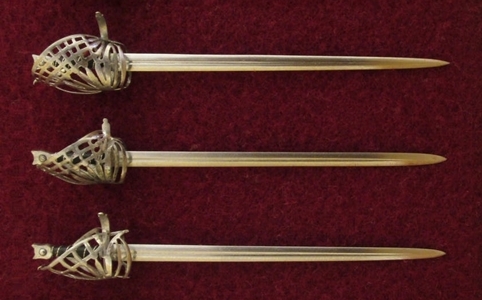
These are swords of mercenary and volunteer troops recruited mostly of Dalmatians, who were abusively referred to as "schiavi" (eng. slaves) in Venice, and of Morlachs from area next to the Ottoman border. Schiavone were not made in Dalmatia, maybe they were only somewhere assembled from blades and other parts imported from Brescia and Belluno workshops. Schiavone are by origin and by design an Italian weapon. However, they are part of Croatian warrior history not only by name and fact that they were mostly used by Croats, but also by becoming part of Croatian folklore. Schiavona was primarily an infantry weapon, but sometimes city guards were also armed with it.
Yatagan
The most famous Ottoman weapon. Popular also in some Croatian regions. It is a special type of knife with curved single-edged blade. Yatagan was used in cavalry charges and in close fights. Handle is branched for stability. Handles are made of wood, horn, elephant bone, metal... They are often filigree decorated with gold and silver cord, precious stones and amber. Inscriptions on blades were written in Arabic characters, usually containing name of the master, owner's name, or a verse from the Quran.
Korda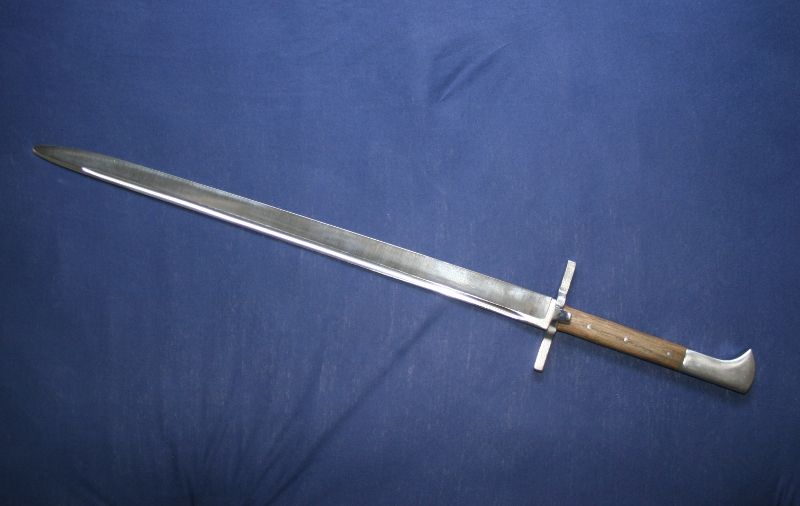
Long war-knives (Grosse Messer, Kriegmesser, Bauenwehr, Rugger, custellerium, custodian etc.) were always single-edged like a sabre, shorter than a Western European sword, with a thin elastic blade and a rough design. Civilians, peasants, citizens, but also some infantry units, navy soldiers, archers, gunmen and auxiliary units were armed with it. So, the lower layers of European medieval society used it. In our (Croatian) history sources, long war-knives were call "korda" (from latinism coltellaccio, cortelas; one can still today hear the word "kurtela" for a knife in Dalmatia). Long war-knives, from the end of 15th and from the first half of 16th century, had blade lengths from 70 cm to 100 cm and longer, so the longest specimens were actually a two-handed weapon.
Sabre
Sabre, unlike sword that slashes and stabs, cuts by a broad motion. While its massiveness is more important for sword, because weight contributes to cutting function, for sabre it is reversed because it is a weapon of extremely attacking and rapid handling. Sabre is primarily a cavalry weapon that came to Europe from Asia during steppe tribes' raids, whose warriors were mostly horsemen.
Nadžak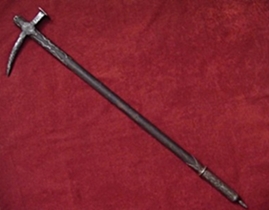
Nadžak (war-hammer) appears in military use in the 14th century. Back then, heavy armour and iron helmets could no longer be cut open by axes, so there was a need for more effective weapons. Thus, axes began to have an extension in shape of a beak that could penetrate armour. Later, a massive knob similar to hammer was added so it could hit harder. So, nadžak is a weapon with a beak and a hammer. Nadžak was used by infantry, and from the 16th century by cavalry as well. It was worn hooked to a saddle or a belt. Later, it was used as a sign of honour and military status.
Mace and bludgeon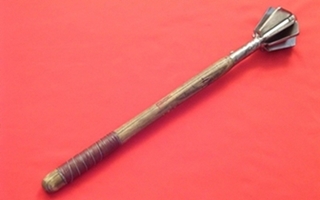
They were used by Sumerians 3000 years BC, then by ancient Greeks and Romans, Langobards, Normans, English and other nations. They were also popular weapons among European peasants in the 15th century. Maces were weapons consisting of a wooden or iron handle with a wooden, bronze or iron head that could have different shapes. Later, they were used as a sign of honour and military status because of their decorative forms.
Halberd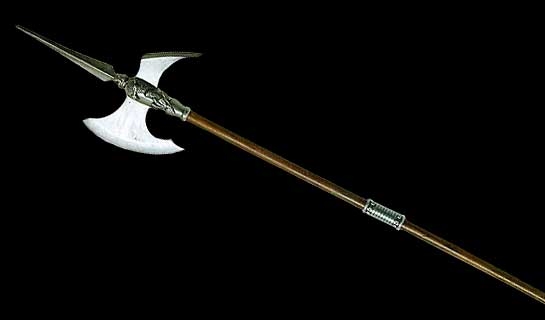
Halberd consists of a pole, a metal spike, and an axe which has a horn or a hook on other side. Halberd is a Swiss infantry weapon that was first used in the 14th century as a very effective weapon in fight against armoured enemy. A horseman or a horse would be hit using a spear, i.e., spear served to stab or crush horseman from horse, and axe was used for cutting. Infantry in first battle lines was armed with halberds. At the end of the 15th century, infantry with halberds was progressively moved into the centre of military formations, and in the 16th century infantry with halberds was less and less used in combat. Since that time halberds are getting more decorative and they go from battle lines to hands of guards and serve as a sign of honour.

